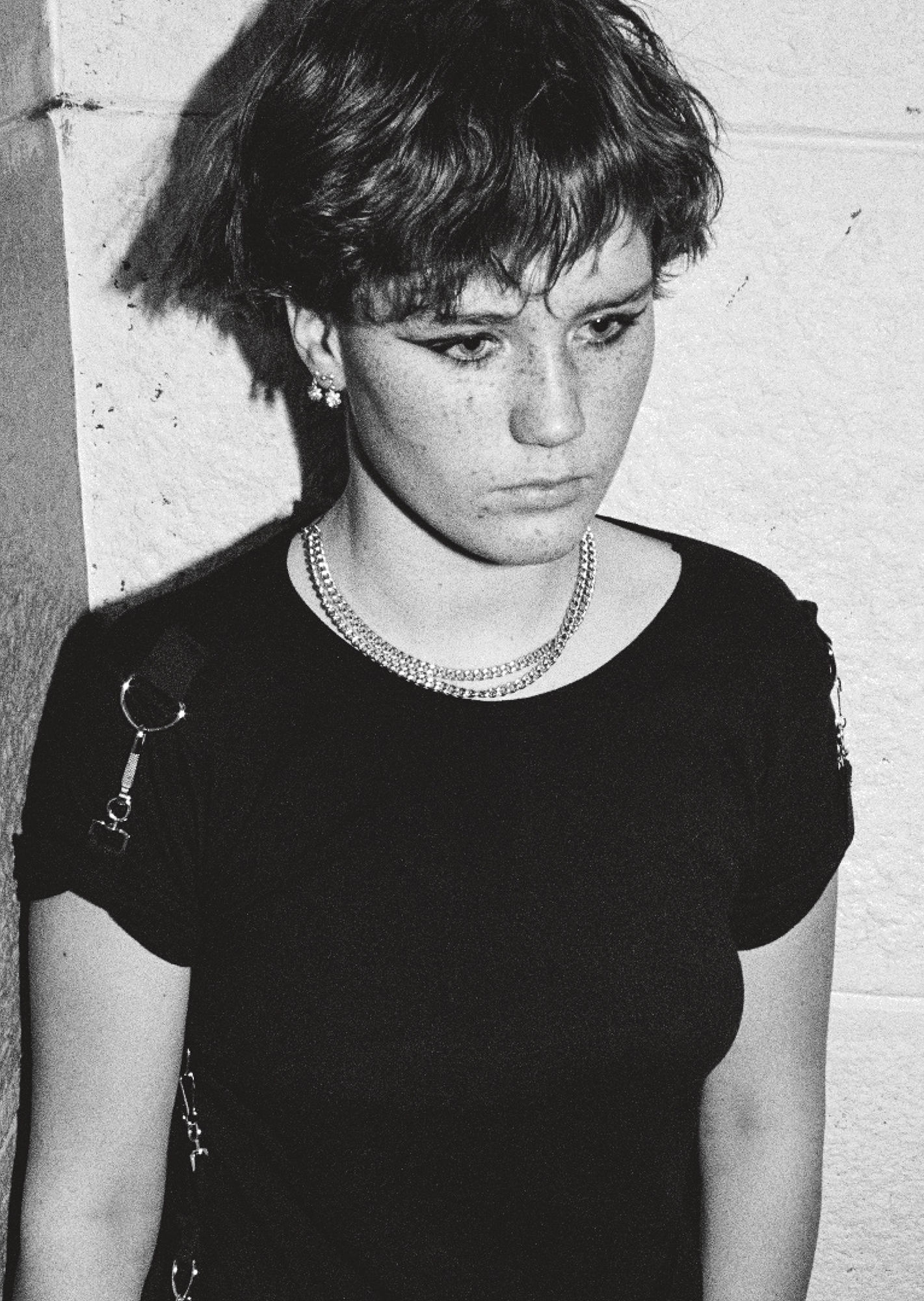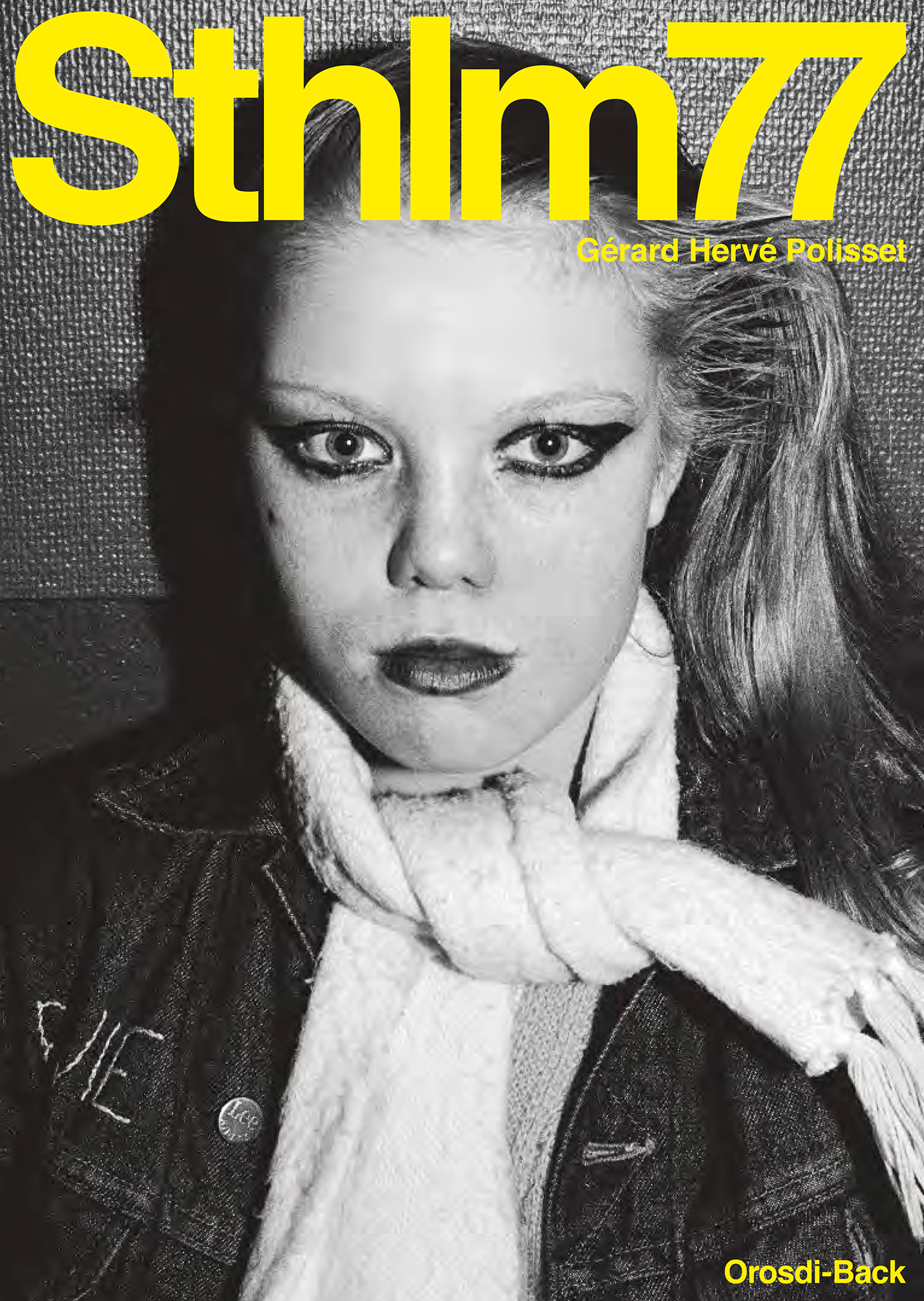The Lessons of Memory – Review of “Sthlm77” by Gérard Hervé Polisset
One of the most wonderful, and most troubling, things about photography is the way the images linger. We capture the present, some fraction of a second of the very-right-now, and that fraction persists longer than we will be alive. Yes, we can destroy a print or a file, but we seldom do. Something about a picture speaks to our sense of mortality, to the fight we have against it, to the urgent but myopic love we have for every fraction of a second.
“Sthlm77” by Gérard Hervé Polisset
Published by Orosdi-Back, 2018
review by W. Scott Olsen
There are, of course, the minor joys and embarrassments that come from this type of memory. We can revisit what we believed was haute couture at the time, only to cringe today. We can see old friends and relatives in their youths and be reminded that time is a visceral process. Or, if you’re like me, you can look at old school pictures and wonder: who are those people?

Yet there is the larger role that comes with preservation, too. A photograph captures people and places, light and shadow, but it also captures milieu. It captures assumptions and hopes and trends and naivety as well as wisdom. Looking at an old image, we see much more than people and setting. If we look close enough, we see the rhythm that drives the 1/60th of a second into being.
I am thinking about memory and milieu because I have a fine and wonderful book on my desk today. Sthlm77, by Gérard Hervé Polisset. This is a book about punk rock in Stockholm in 1977. The book is a collection of portraits, head shots taken in clubs, posed but only quickly, nearly candids, black and white, and completely fascinating.

In the book’s introduction, Polisset writes, “Suddenly in 1977, the punk wave hit Stockholm from London, via Paris and New York. When Graffe and I saw punks around town, we thought they looked so young and innocent beneath their tough exterior. After I came back from a trip to Paris, I told Graffe about a trendy magazine named Façade, and that if we took portraits of the punks in Stockholm, maybe we could get those pictures published by the magazine. After talking to some punks on the street, we were invited to their private parties. We found it all very exciting, so we both began to take pictures of them—Stockholm’s first punks…Within a month, we had a collection of portraits and showed them to Lars Hall, the Swedish advertising legend who had just started an impressive photo gallery, Camera Obscura, in Gamla Stan. “Thank you for showing the pictures, but what do you want from me?” Lars asked. Our interest in the project died. We moved on to other things. The pictures were stored in a drawer for the next 30 years.”
And now they are back.

Sthlm77 is a large book and the images bleed off the edges. All of them are black and white, a bit grainy, and most of them are simply headshots. But every one of them is electric, too. There is energy here. There is youth and rebellion and celebration of both. These are pictures of attitude. There are studded collars and lapel buttons and chains. Many of the people look right into the camera and their expressions are clear. Today, they say, I am loud.
Polisset studied graphic design and photography and went on to a career in advertising. He is a keen observer and his experiences as well as insights into the punk movement are sharp and well written. The book’s foreword text written by music journalist, Häkan Lahger, is often as compelling as the images. For example, Lahger writes, “Sid Vicious sits there in the cramped chaotic backstage room trying to teach a little tyke, 10 or 12 years old, to play bass. For 30 years I’ve wondered what that kid was doing in there. Slowly and pedagogically, like an old-fashioned elementary school teacher, Sid shows him how to hold the gigantic bass. It’s an unbelievable sight. A drugged-out angel of death who carries all of punk’s myths on his frail shoulders, teaching a small Swedish suburban brat how to play bass while Sex Pistols collapse around him. The band has begun its death throes and within a year it will all be over; in another six months, Sid Vicious will be dead.”

Later on he says, “Punk was logical. It wasn’t a tidal wave. Not an air strike without warning. Punk was consequential. It didn’t want anything in particular. It just wanted to rush by. It didn’t have an agenda. Not much of a message. Punk was a cry from the underground…Punk’s aesthetic was crass and harsh, and maybe that was why it was more beautiful than most youth movements. There was a purity in punk which no other trend has been able to match. It kept adolescent virtue and innocence all the way to its death.”
All of the text in Sthlm77 is in both Swedish and English, two columns running side by side. At the end of the book there are a series of letters and interviews, the interviews conducted by Håkan Lahger. Polisset sought out the men and women he photographed, more than 30 years later, and asked them to consider their youth. Their memories are far from angry or tragic. Instead, there is intimation of a glimpsed truth. For example, Marie Spagnolatti, who was 16 years old in 1977, writes, “It’s hard to say when punk ended. I still feel like a punk. It’s something within me. How I am as a person. Rebellion isn’t something you turn on and off. It’s always there. So for me it hasn’t really ended…Punk also taught me to look a little further, to not care about how people look and behave superficially, but listen to what this person has to say regardless of the outside. That’s been important for me…Of course, we punks thought we were tough, hard and all that, but we really looked after each other. If someone felt bad we made sure they got home all right. We cared about each other.”

Sthlm77 is a book that manages to capture and collect a feeling. That feeling, the punk idea, was loud and defining. Perspective, especially the perspective that comes from history and the ability to look back with some insight provided by intervening years, is a wonderful thing. In many ways, 1977 was a long time ago. But it was also just yesterday. In 1977 I was in my first year of college, which means I am the same age as the people in this book. I recognize their energy and distrust. But I do so with hair that’s turned grey. That’s one of the real powers of this book. It makes me think of William Wordsworth, who said, “Poetry is the spontaneous overflow of powerful feelings: it takes its origin from emotion recollected in tranquility.” In 1977, punk was the overflow of powerful feelings. In 2022, its recollection is poetry.
The book has a website and can be purchased here.

